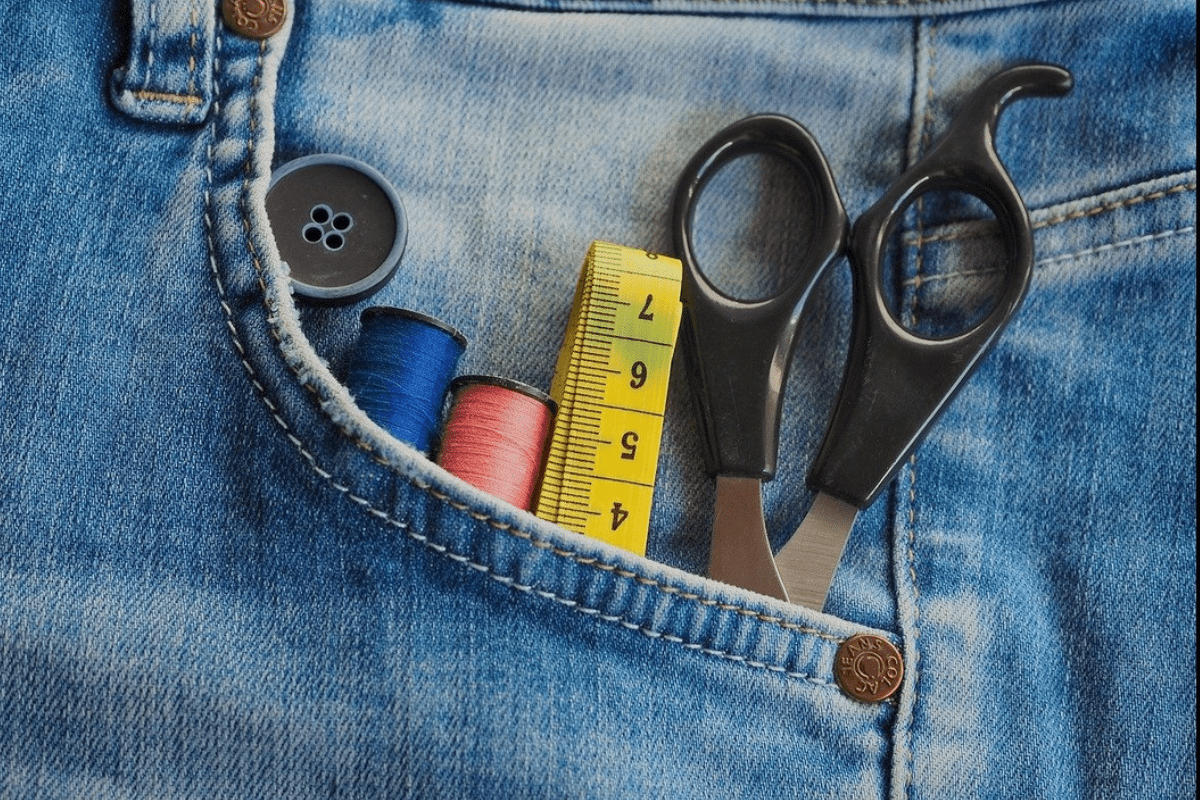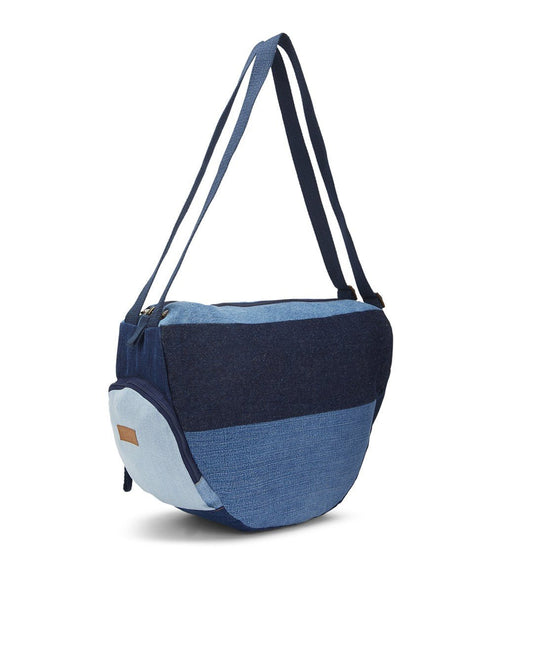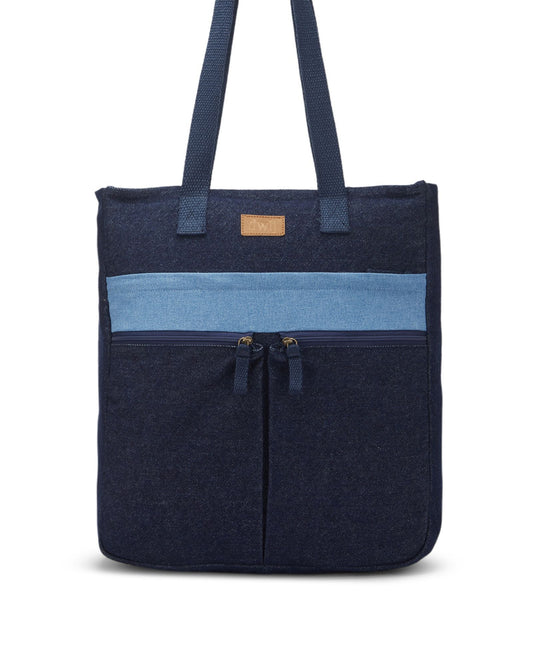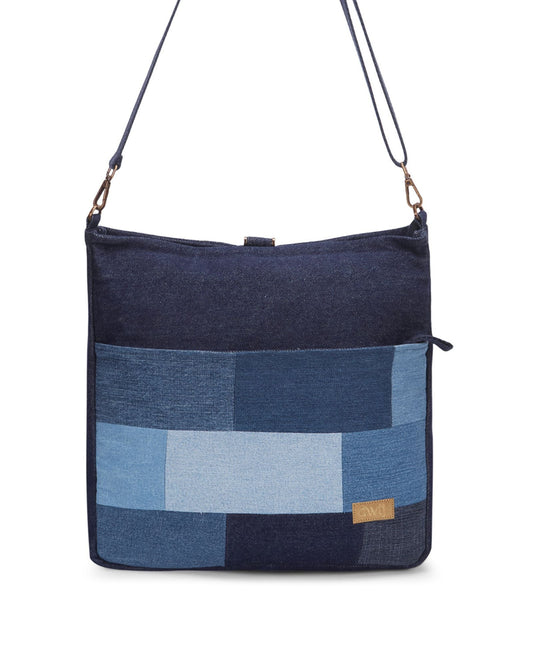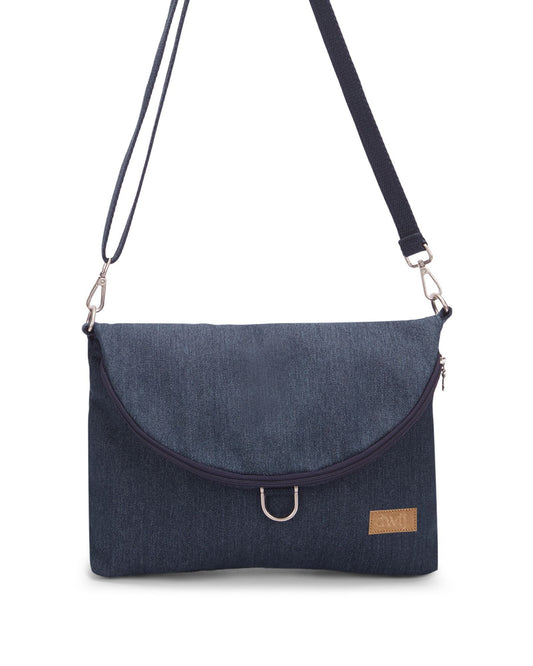Your Clothes Are Choking the Planet—And You’re Paying the Price!
Every second, a truck of clothes is burned or dumped! And that trendy T-shirt you've got? It took 2700 litres of water to make it, which is enough to satisfy the thirst of one person for 2.5 years. Along with that, the toxic dyes used to colour the clothes are poisoning the rivers and the workers earn the bare minimum to keep fast fashion running.
Fast fashion is killing the planet, polluting water and trapping the workers in poverty. And the worst part? We are feeding it!
Here is the plot twist! We can change things! How? By supporting the movements that fight against fast fashion. Upcycling is one of the rebel movements that fights back with fast fashion. By implementing the upcycling technology we can turn the old discarded clothes into stylish high-quality stylish fashion without hurting the planet. The benefits of upcycling are countless. Upcycled fashion focuses on creativity, not on destruction!
1. The Dark Side of Fast Fashion
Fast fashion may look cheap on price tag but has hidden costs which are paid by the planet! From toxic pollution to worker exploitation, fast fashion is destroying the world and making addicted to it.
2.1. Environmental Impact of Fast Fashion
-
Textile waste: Every year almost 92 million tons of clothes go in the trash. Which is almost like a truck full of clothes getting dumped every second.
-
Water pollution: Creating a new piece of cloth pollutes water and the textile industry is responsible for about 20% of the world's water pollution.
-
Carbon emissions: Transportation and manufacturing of clothes cause air pollution. The Fast fashion industry is responsible for 8-10% of global carbon emissions, which is more than all international flights and shipping combined!
2.2. The Social Impact of Fast Fashion
The workers in the fast fashion industries are often underpaid. Some factories are under unsafe conditions. For instance, in 2013, a building in Bangladesh collapsed and killed more than 1100 garment workers.
2.3. Fast Fashion’s Influence on Consumer Culture
-
Disposable Fashion: Fast fashion influences people to buy cheap, trendy clothes and wear them only a few times. This leads to more clothing waste production.
-
Constant Buying: The advertisement shown on TV and social media makes us feel like we need new clothes all the time, even if we don't need them actually!
-
Psychological Effects: Fast fashion brands play with consumer psychology, they make us always want the latest fashion which makes us feel anxious and unhappy with what we have.
3. What Is Upcycling and How Does It Solve the Fast Fashion Problem?
Although fast fashion is killing the planet, we can fight back. Instead of throwing old clothes, we can transform them into unique and stylish pieces through upcycling. As upcycling technology is rising brands, designers and DIY fashion lovers are upcycling discarded fabrics into fashion and everyday wear.
3.1. Upcycling: Repurposing for a Better Future
Firstly let us understand the difference between recycling and upcycling. Recycling is breaking down old material and making new stuff from it. The process of recycling uses lots of energy and water. On the other hand, upcycling is turning the old stuff into something new without breaking them down. For example, if we create a denim sling bag from old denim, the remaining fabric straps will be used to make the denim jewellery. This means zero waste and zero pollution!
3.2. Environmental Benefits of Upcycling
There are numerous benefits of upcycling. Some of them are listed as follows:
1. Less waste and less pollution by reusing old fabrics and no use of toxic dyes and chemicals.
2. Upcycling saves water that would be needed to create the piece and lowers carbon emissions by reducing the need for new production.
3. Upcycling protects natural resources by reducing the need for raw materials to create new fabric, which helps the planet to heal.
3.3. Benefits Of Upcycling
There are numerous benefits of upcycling. Some of them are listed as follows:
1. Less waste and less pollution by reusing old fabrics and no use of toxic dyes and chemicals.
2. Upcycling saves water that would be needed to create the piece and lowers carbon emissions by reducing the need for new production.
3. Upcycling protects natural resources by reducing the need for raw materials to create new fabric, which helps the planet to heal.
4. Affordable and accessible fashion without breaking the bank.
5. Upcycling encourages creativity, not mass production!
4. How Upcycling Contributes to a Sustainable Fashion Future
Repurposed Eco friendly Denim Jeans Plain Bucket Hat (Large)
Upcycling is the solution for a sustainable fashion future. We already have the required amount of clothes, we just need to reuse and upcycle them instead of throwing them into the trash for a better future for the planet. Sounds simple, right?
Upcycling contributes to the sustainable fashion future by reducing the demand for new resources, fair labour, supporting ethical fashion, and encouraging creativity and unique fashion. Together this will create a lasting positive impact on the planet and fashion industries.
5. The Role of Consumers in Supporting Upcycling
Fast fashion is a giant waste machine, but guess what? We have the power to stop it! Every choice we make, what we buy, what we throw away and what we upcycle, shapes the future of sustainable fashion. Choosing Upcycled fashion and upcycling technology will result in waste reduction, it will save money and make you look better, all these while helping the planet!
5.1. Shopping Smarter: How to Embrace Upcycled Fashion
To embrace upcycled fashion, always shop from the upcycling brands. This small step will save you from the efforts needed to upcycle the clothes and also, you will get unique upcycled clothes at the same or even at lower prices!
5.2. Donation, Repair, and Resale: The Circular Approach
Already have old clothes? Don't have time to upcycle them? Worry not! You can donate your old jeans, and denims to us, we will upcycle them! We make beautiful upcycled crossbody bags, upcycled denim tote bags, and a variety of upcycled denim products from the old denim.
Instead of throwing the old clothes in the trash donating them to the upcycled brand will be the better decision for the planet and consumers too!
6. The Future of Fashion: Upcycling as a Long-Term Solution
Upcycled Patched Laptop Sleeve With Handle
Slowly, fast fashion is running out of time! Consumers are becoming aware and brands are being called out. The future of fashion isn't about making more but it's about making better. And upcycled fashion is leading the way. With the new upcycling technology and growing demand for eco-friendly products from consumers, the fashion industry is shifting towards creativity, responsibility and sustainability
6.1. The Growing Trend of Sustainable Fashion
Consumers are becoming more aware of the worst effects of fast fashion and shifting towards eco-conscious choices.
Social media is pushing sustainable fashion. Eco-conscious influencers encourage the audience to ditch fast fashion and shift towards upcycled fashion. Due to all the efforts upcycled fashion is becoming the mainstream.
6.2. Innovations in Upcycling Technology
Technology making upcycling easier and faster! With technologies like AI, laser cutting advanced stitching techniques, 3D printing and biodegradable dyes upcycled fashion is getting more sustainable, and faster.
6.3. The Economic Impact of Sustainable Fashion
Brands investing in upcycling and eco-friendly practices are expecting long-term profits. Due to the shift in consumers' thinking, they are willing to pay more for quality and ethical fashion instead of cheap fast-fashion clothes. Upcycling supports artisans, tailors and small businesses instead of relying on mass production. So countries adopting upcycled fashion practices are seeing growth in ethical jobs.
7. Conclusion
Upcycling offers a smarter way to save the planet from the destruction of fast fashion. So turning old clothes into stylish and high-quality pieces like upcycled bags, upcycled jewellery and upcycled home goods can help us reduce waste, save resources and promote ethical fashion. With all the advancements in upcycling technology, sustainable fashion is becoming more accessible and innovative. So every conscious choice we make helps to reshape the industry for a greener future. We hold the power to change fashion!
8. Frequently Asked Questions (FAQs)
1. What is fast fashion?
Fast fashion produces cheap, trendy clothes to meet the consumer demand. These fast fashion brands quickly copy the runway styles and mass produce them. This encourages consumers to buy more and throw away the clothes faster.
2. Why is fast fashion a problem?
Fast fashion is harmful to the planet and people. This leads to massive textile waste, high carbon emissions, and toxic dyes that pollute water resources. Also, the workers in the fast fashion industries are often underpaid and in unsafe work conditions.
3. What is upcycling and how does it help the environment?
Upcycling transforms the old materials into new ones without breaking it down. Upcycling reduces waste. lowers energy consumption and minimizes pollution by giving new life to old clothes instead of dumping them into landfills.
4. How can I start upcycling my clothes?
You can start upcycling by repurposing old clothes into new styles. Still confused? donate your old denims to us. We will upcycle them into beautiful upcycled tote bags, upcycled backpacks, and much more.
5. Can upcycling replace fast fashion completely?
Although upcycling can not eliminate fast fashion completely, it can reduce the impact by promoting sustainable and long-term fashion choices. The more the brands and consumers adopt upcycling, the more the demand for fast fashion will decline, resulting in the push to the industry towards a greener future.

